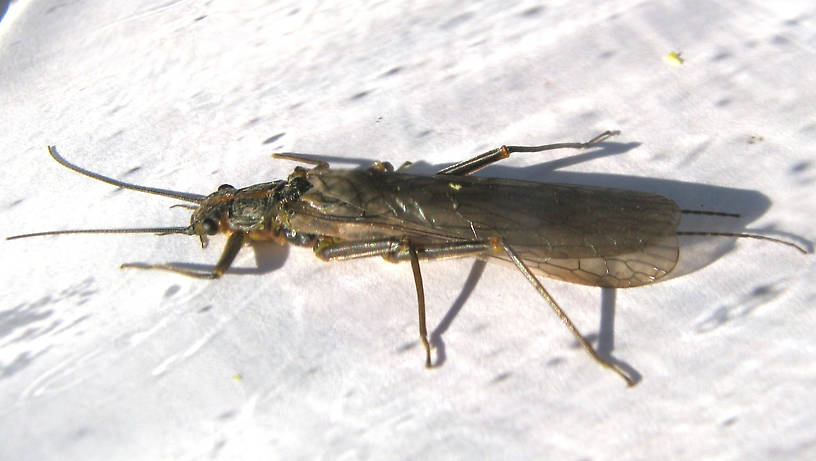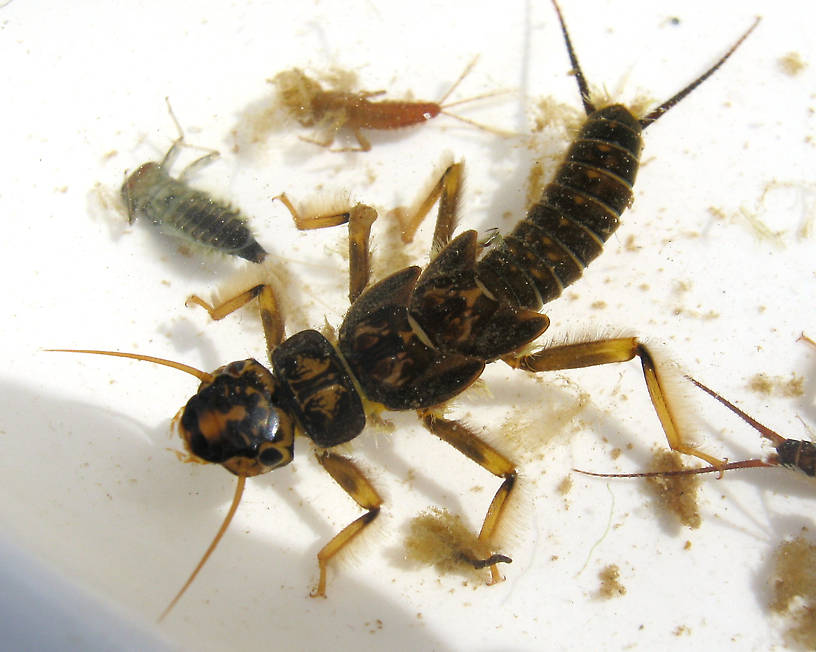
Hex Mayflies
Hexagenia limbata
The famous nocturnal Hex hatch of the Midwest (and a few other lucky locations) stirs to the surface mythically large brown trout that only touch streamers for the rest of the year.
Featured on the forum

I was not fishing, but happened to be at an unrelated social event on a hill above this tiny creek (which I never even saw) when this stonefly flew by me. I assume it came from there. Some key characteristics are tricky to follow, but process of elimination ultimately led me to Sweltsa borealis. It is reassuringly similar to this specimen posted by Bob Newell years ago. It is also so strikingly similar to this nymph from the same river system that I'm comfortable identifying that nymph from this adult. I was especially pleased with the closeup photo of four mites parasitizing this one.

Troutnut is a project started in 2003 by salmonid ecologist Jason "Troutnut" Neuswanger to help anglers and
fly tyers unabashedly embrace the entomological side of the sport. Learn more about Troutnut or
support the project for an enhanced experience here.
Closeup insects by Entoman from the Lower Yuba River in California

This female dropped her eggs just before this photo was snapped. The distinctive notch in the subgenital plate identifies the species. An interesting observation is how active they get when exposed to direct sunlight. Trying to stage this specimen was most difficult. In the shade it would calm right down, but when exposed to direct sun it would immediately go nuts, scampering all over quickly without pause. Perhaps this explains why they don't seem to be found out and about on overcast days, but if the sun peeks out... She was 24 mm long, head to wingtip.

This monster started to feed within a few minutes of sharing the inspection tray with its victims. This nymph is a voracious predator of small invertebrates and has even been noted for feeding on small fish and salmonid alevins. The niche it fills in fast water is equivalent to the Dragonfly nymphs that inhabit slower water.
Hesperoperla pacifica nymphs are easily distinguished from other western perlids by the presence of anal gills (obfuscated by algae in the tray) in combination with an hour glass shaped pale mark on the front of their heads.
Hesperoperla pacifica nymphs are easily distinguished from other western perlids by the presence of anal gills (obfuscated by algae in the tray) in combination with an hour glass shaped pale mark on the front of their heads.

